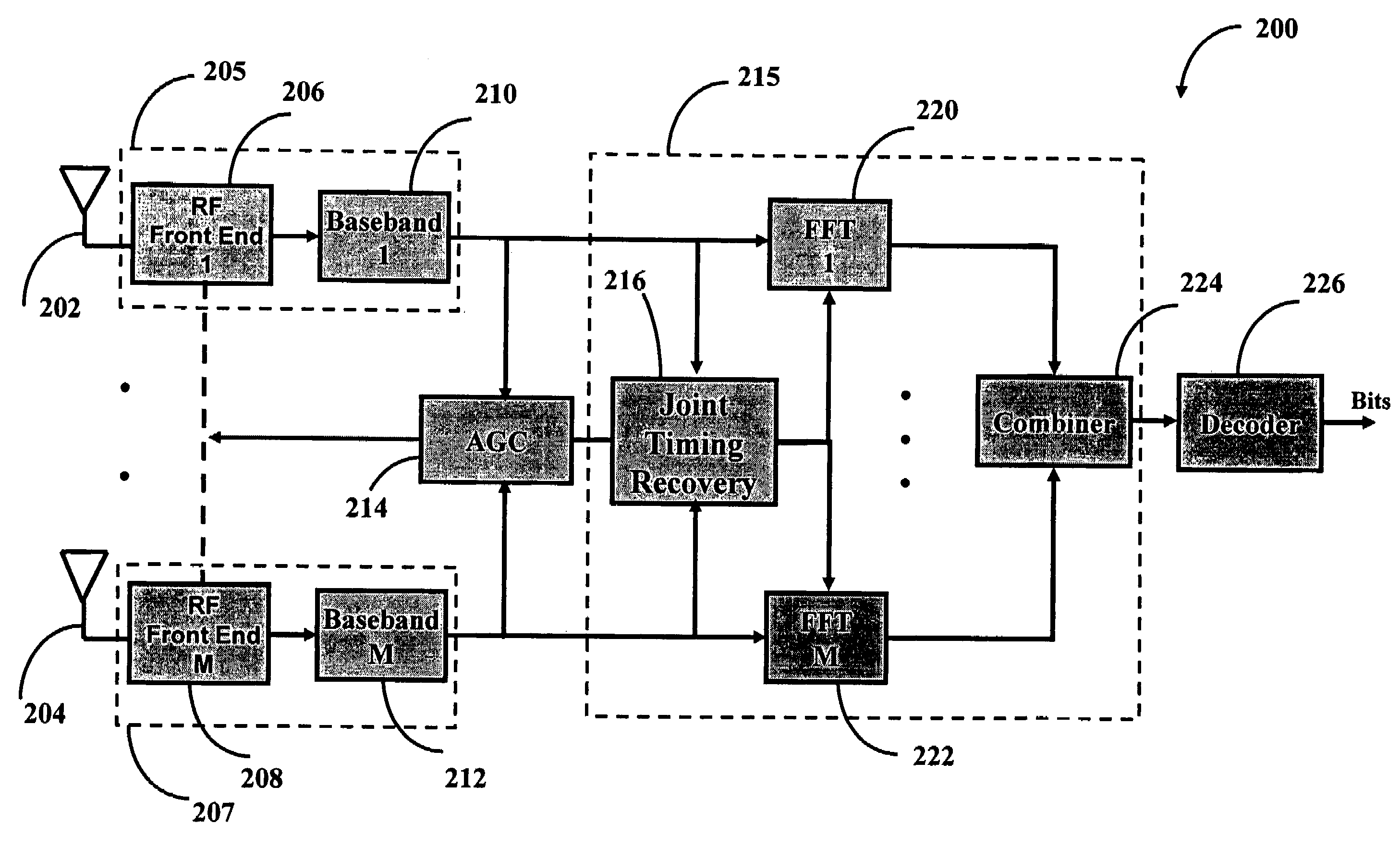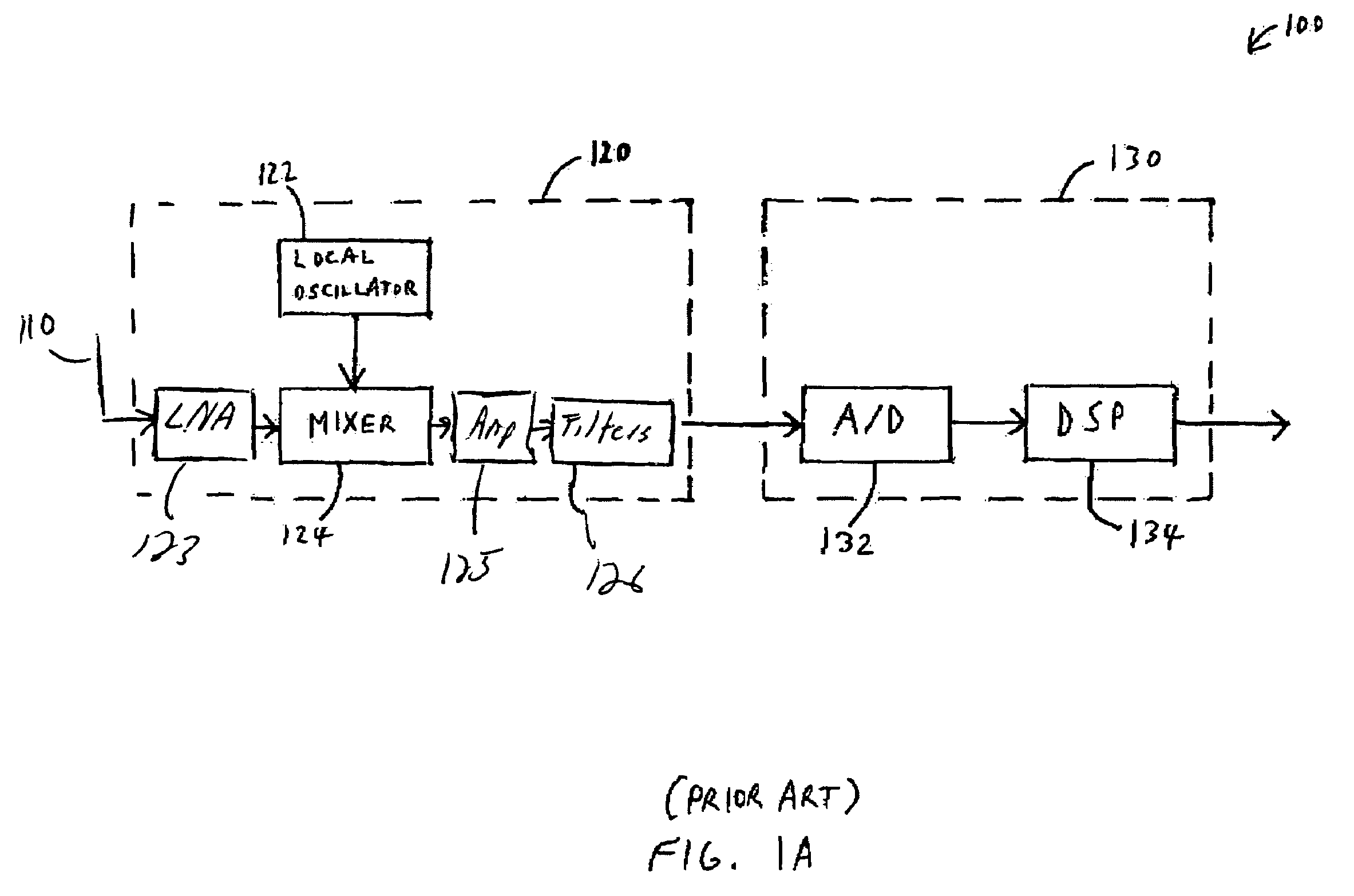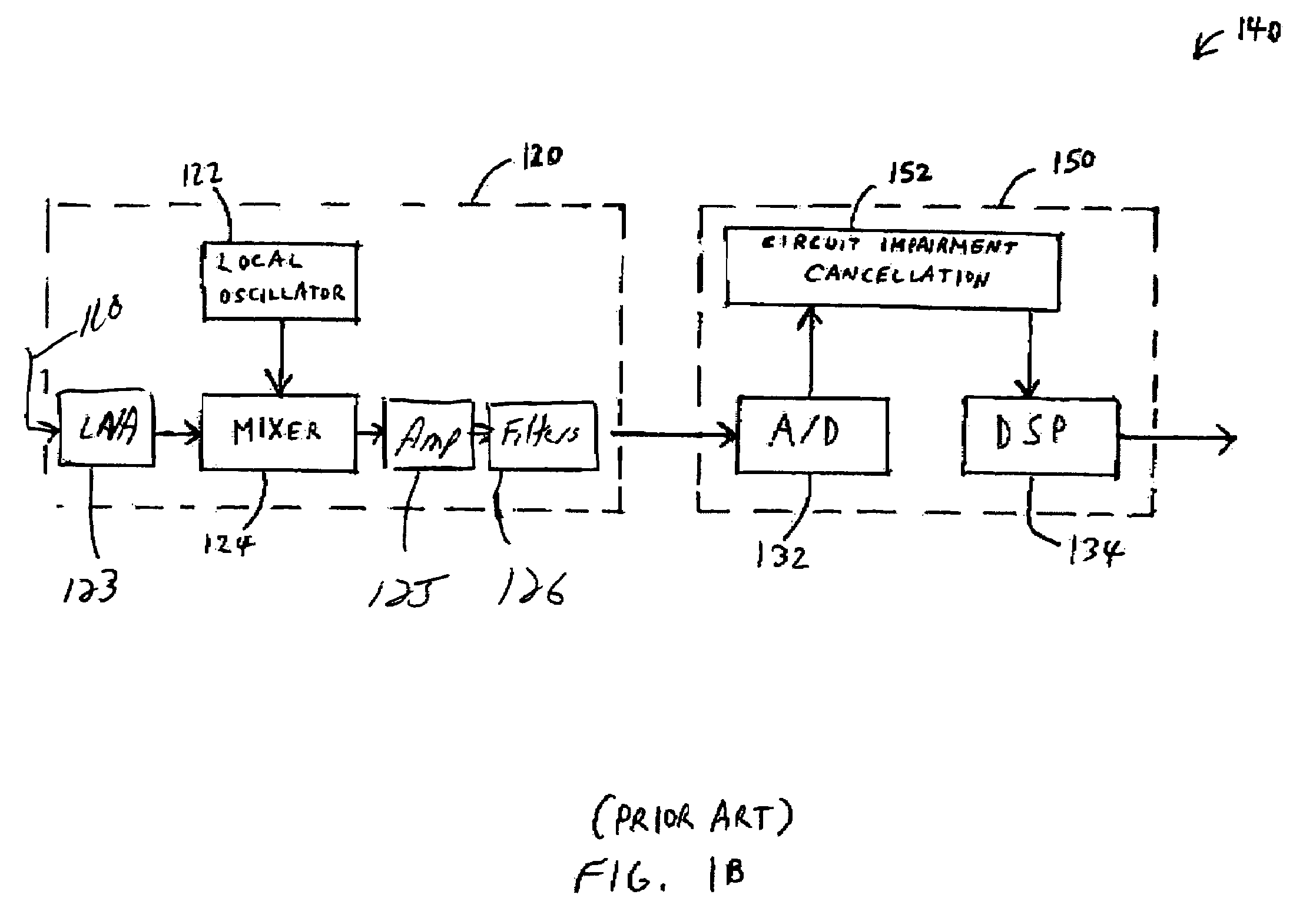Apparatus and method of multiple antenna receiver combining of high data rate wideband packetized wireless communication signals
a wireless communication signal and receiver technology, applied in the field of wireless communication, can solve the problems of fading in the communication channel, wireless communication systems can encounter circuit impairments in the receiver circuit, and many problems, and achieve the effects of reducing the number of antennas
- Summary
- Abstract
- Description
- Claims
- Application Information
AI Technical Summary
Benefits of technology
Problems solved by technology
Method used
Image
Examples
Embodiment Construction
[0045]The present invention provides a system and method of multiple antenna receiver combining of high data rate wideband packetized wireless communication signals. In an exemplary embodiment, high data rate wideband wireless communication signals are packetized OFDM signals, and may be mobile, such as with a driver in a moving vehicle, or movable, such as movement within the confines of a building. To the extent that mobility is discussed herein, reference will be made to mobile, although it will be understood that this applies also to a movable. Referring to FIG. 2, in an exemplary embodiment, the present invention provides a multiple antenna receiver combiner 215 that includes a joint timing recovery unit 216, M FFTs 220, 222, and a combiner 224, logically interconnected as shown, where M is an integer greater than or equal to 2. In an exemplary embodiment, the high data rate wideband packetized wireless communication signals are 802.11a signals. In an exemplary embodiment, M eq...
PUM
 Login to View More
Login to View More Abstract
Description
Claims
Application Information
 Login to View More
Login to View More - R&D
- Intellectual Property
- Life Sciences
- Materials
- Tech Scout
- Unparalleled Data Quality
- Higher Quality Content
- 60% Fewer Hallucinations
Browse by: Latest US Patents, China's latest patents, Technical Efficacy Thesaurus, Application Domain, Technology Topic, Popular Technical Reports.
© 2025 PatSnap. All rights reserved.Legal|Privacy policy|Modern Slavery Act Transparency Statement|Sitemap|About US| Contact US: help@patsnap.com



